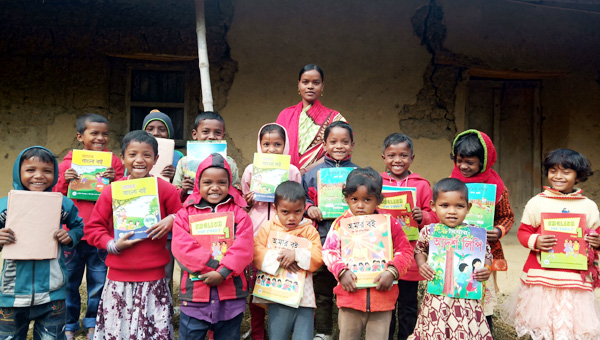
NAGR Village School and Education Program
Overview of NAGR (National Agency for Green Revolution)
Mission: To improve educational access and quality for rural children in the working areas.
Vision: Empowering communities through education, fostering long-term development, and improving social mobility.
Objectives
To provide quality primary and secondary education to children in rural areas.
To improve literacy rates and educational standards in underserved communities.
To build infrastructure that supports the growth and development of future generations.
To create a supportive environment for both students and teachers in rural villages.
Key Components of the Program
Primary Education (14-15 Schools)
Establishment of primary schools in various rural villages to cater to the educational needs of children.
Curriculum focused on foundational skills: literacy, numeracy, basic science, and social studies.
Teachers’ training and professional development: Ensuring teachers are equipped with modern pedagogical techniques and subject knowledge.
School facilities: Ensuring the availability of clean, safe classrooms, play areas, and essential teaching materials.
Regular parent-teacher meetings to encourage community involvement in the children’s education.
Upcoming High School (2025)
Plans for the establishment of a high school to continue the education of students beyond the primary level.
Subject offerings for the high school (e.g., science, arts, and commerce streams).
Infrastructure: Setting up science labs, libraries, computer rooms, and other facilities to support high school education.
Teacher recruitment and training: Special focus on recruiting qualified secondary school teachers and providing them with professional development opportunities.
Inclusive Education
Providing support for children with disabilities and ensuring that all children have access to education.
Special programs for girls’ education to bridge the gender gap in rural areas.
Scholarships or financial support for students from low-income families to reduce barriers to education.
Curriculum and Educational Materials
Designing a locally relevant and child-centered curriculum that is aligned with national education standards.
Providing textbooks, notebooks, stationery, and other learning materials.
Digital learning initiatives: Introducing digital tools and e-learning platforms where possible, to enhance learning experiences.
Community Engagement and Awareness
Building strong relationships with local communities to encourage school enrollment and reduce dropout rates.
Awareness programs to promote the importance of education for all children, especially girls.
Involvement of local leaders and stakeholders in the school’s governance, ensuring that schools meet the needs of the community.
Extracurricular Activities
Providing opportunities for sports, arts, and cultural activities to help develop well-rounded individuals.
Encouraging leadership programs, student clubs, and volunteer opportunities to foster responsibility and teamwork.
Teacher Development and Support
Teacher recruitment: Hiring qualified teachers for both primary and secondary education.
Ongoing professional development: Providing training in innovative teaching methods, classroom management, and subject-specific knowledge.
Mentorship and support systems for teachers to enhance their teaching skills and create a positive learning environment.
Infrastructure and Facilities
Building safe, comfortable classrooms equipped with modern learning tools.
Ensuring the availability of clean drinking water, sanitation facilities, and a safe playground.
Expansion plans for the new high school, including building additional classrooms, science labs, and other essential facilities.
Monitoring and Evaluation
Regular monitoring of student performance through assessments and tracking academic progress.
Feedback mechanisms from students, parents, and teachers to improve educational quality.
Periodic reviews of the school infrastructure and resources to ensure they meet the growing needs of the students.
Partnerships and Funding
Collaborations with local governments, NGOs, and educational institutions to improve the quality and scope of education.
Fundraising campaigns, grants, and partnerships to secure financial resources for the expansion and sustainability of the program.
Mobilizing community support through volunteer programs and local donations.
NAGR’s commitment to transforming education in rural areas through the establishment of primary and secondary schools.
Focus on holistic development, providing quality education, and empowering the youth of rural communities.
NAGR has an open Invitation for community involvement, support, and partnerships to ensure the long-term success of the education program.